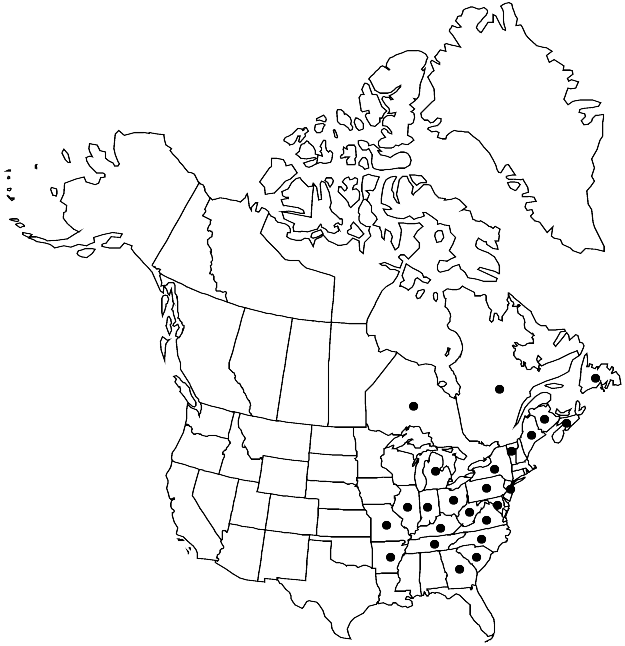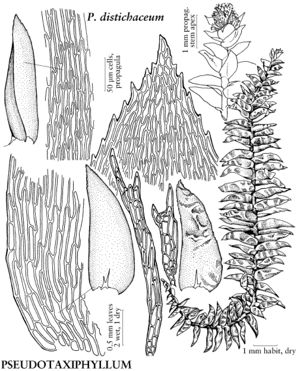Pseudotaxiphyllum distichaceum
J. Hattori Bot. Lab. 63: 449. 1987.
Plants in thin, loose mats, light green to yellowish. Stems 2.5 cm, 1–3 mm wide, complanate-foliate. Leaves squarrose, not upturned-homomallous, distant, ovate or oblong-lanceolate, asymmetric, cultriform, often strongly undulate, 0.3–1.8 × 0.2–0.6 mm; margins plane or narrowly recurved basally, serrulate to entire proximally, serrate to serrulate distally; apex acute to acuminate; costa double, strong; alar cells undifferentiated or quadrate to rectangular, 1–3 along margins; medial laminal cells 48–100 × 4–7 µm; distal cells sometimes prorulose at distal ends on abaxial surface. Specialized asexual reproduction often present as propagula clustered in leaf-axils at or near stem apices, 0.1–0.5 mm, yellowish green, twisted-vermiform, with 1–5 acute, erect teeth at apex. Sexual condition autoicous. Sporophytes unknown.
Habitat: Soil, humus banks, sandstone bluffs, cliff ledges containing mica
Elevation: low to high elevations (100-1700 m)
Distribution

N.B., Nfld. and Labr. (Nfld.), N.S., Ont., Que., Ark., Ga., Ill., Ind., Ky., Maine, Md., Mich., Mo., N.J., N.Y., N.C., Ohio, Pa., S.C., Tenn., Vt., Va., W.Va., Mexico (Jalisco), Mexico (Veracruz), Mexico (Zacatecas), West Indies (Dominican Republic), Central America (Costa Rica), South America (Brazil), South America (Colombia), South America (Ecuador), South America (Venezuela), Asia
Discussion
Pseudotaxiphyllum distichaceum is easily confused with P. elegans, especially when propagula are absent. The asymmetric, often cultriform leaves of P. distichaceum will distinguish it from P. elegans, which has symmetric leaves that are never cultriform. When propagula are present, their location on the stems, as well as their morphology, are distinctly different in the two species. Pseudotaxiphyllum distichaceum has propagula that are elongate, twisted-vermiform with 1–5 acute teeth at the apices, and occur in the leaf axils at or near the stem apices, while P. elegans has propagula in the leaf axils always below the stem apices, and they resemble the parent plant, being much smaller, possessing small leaflike structures along their stems.
Selected References
None.
